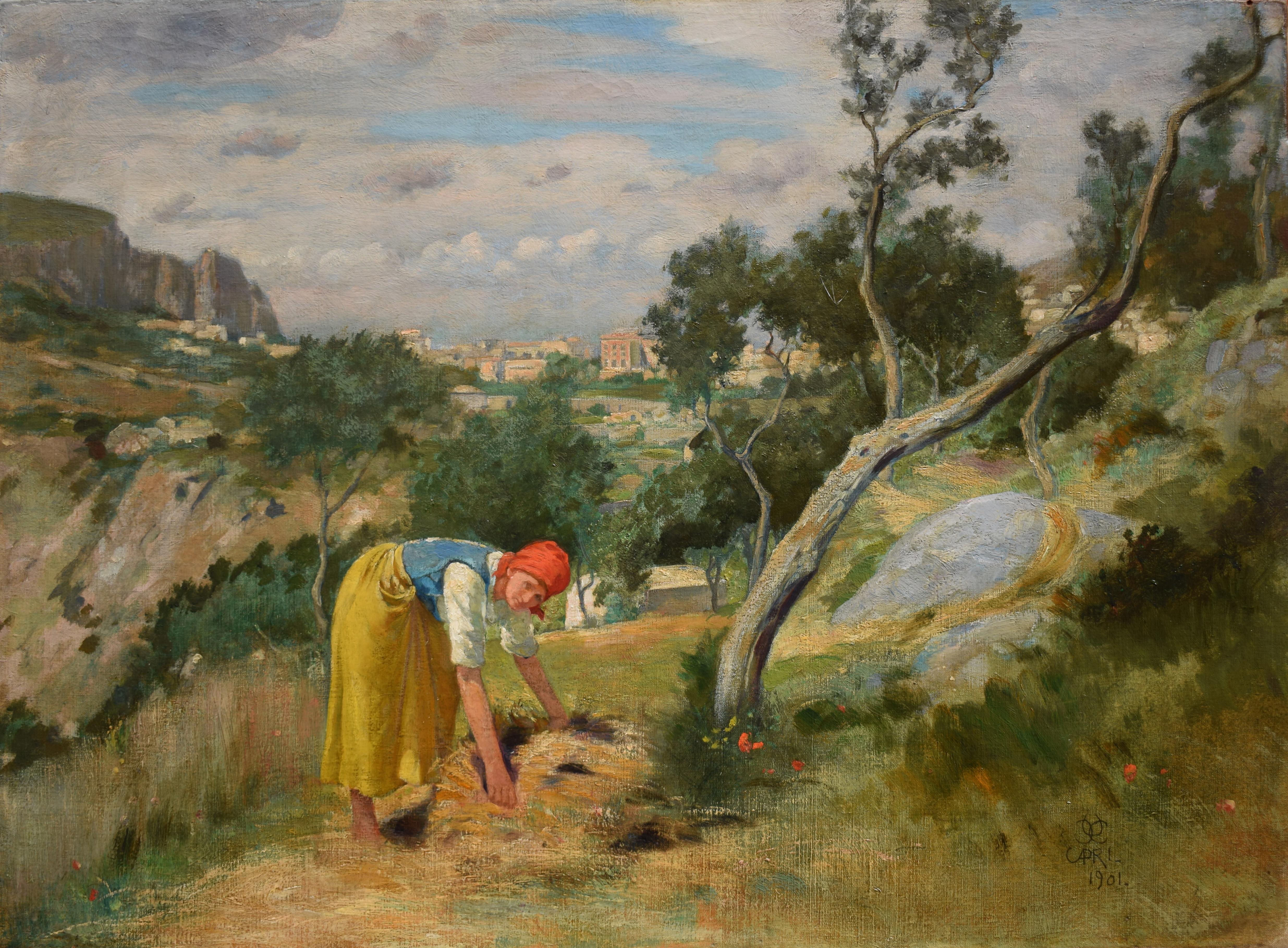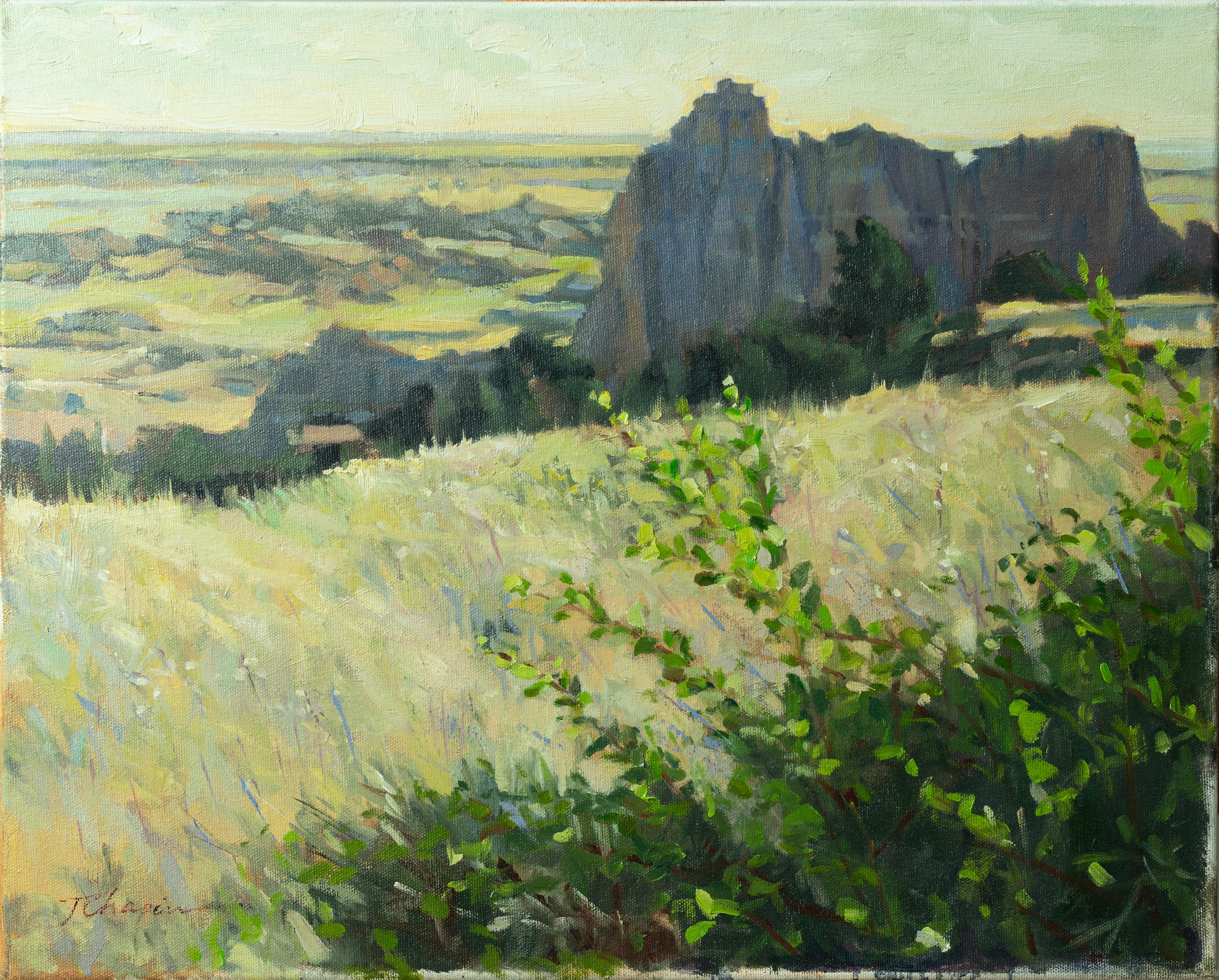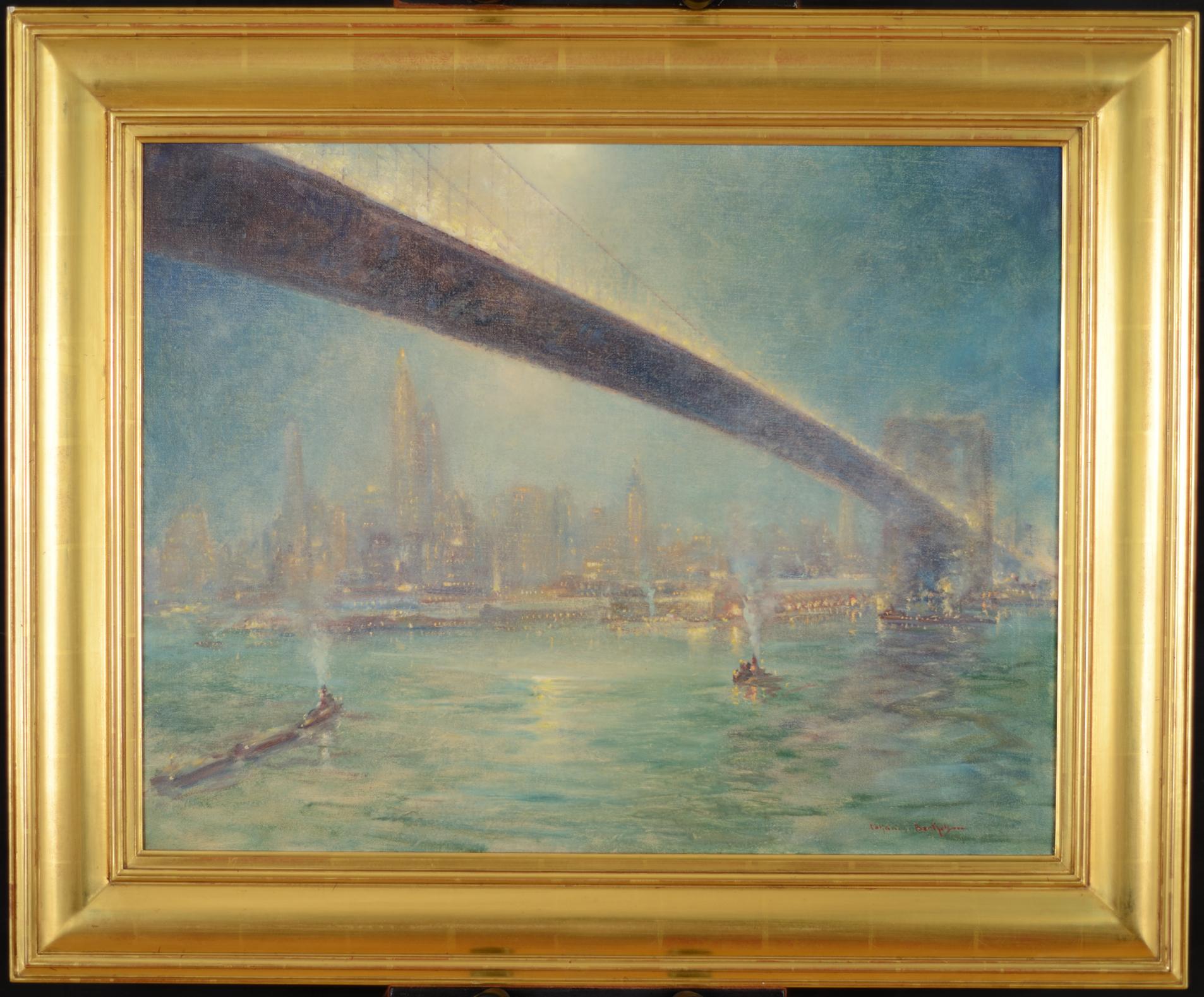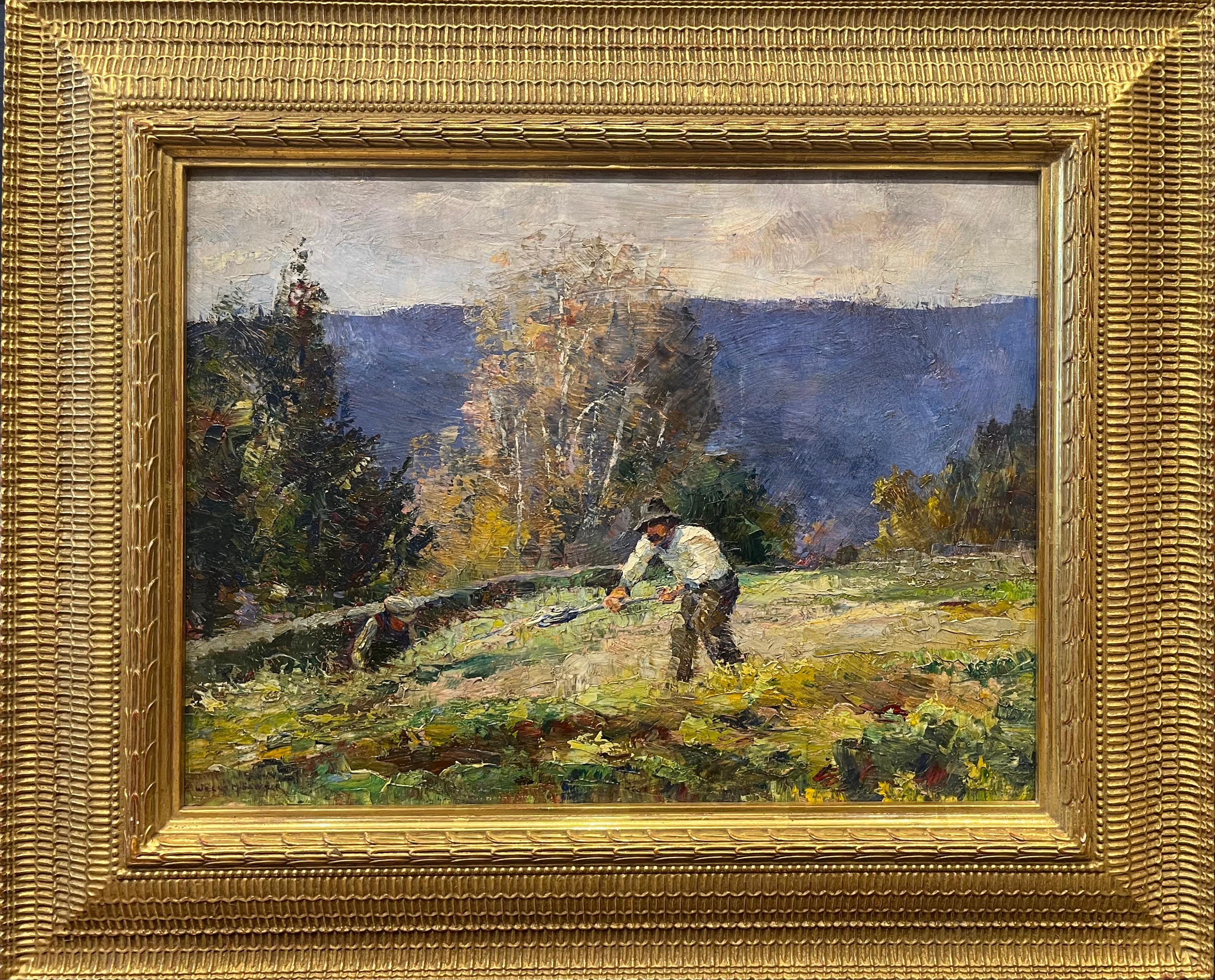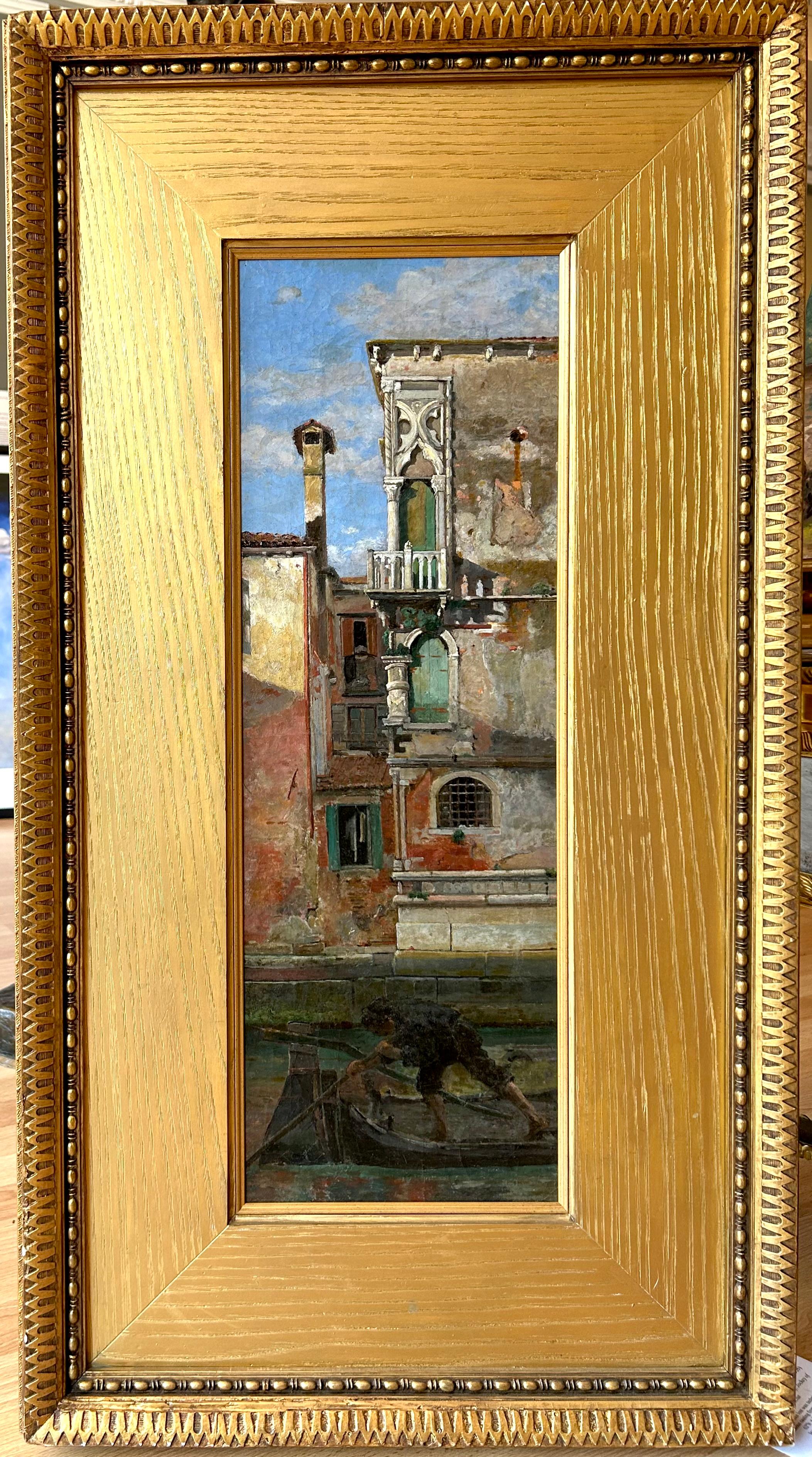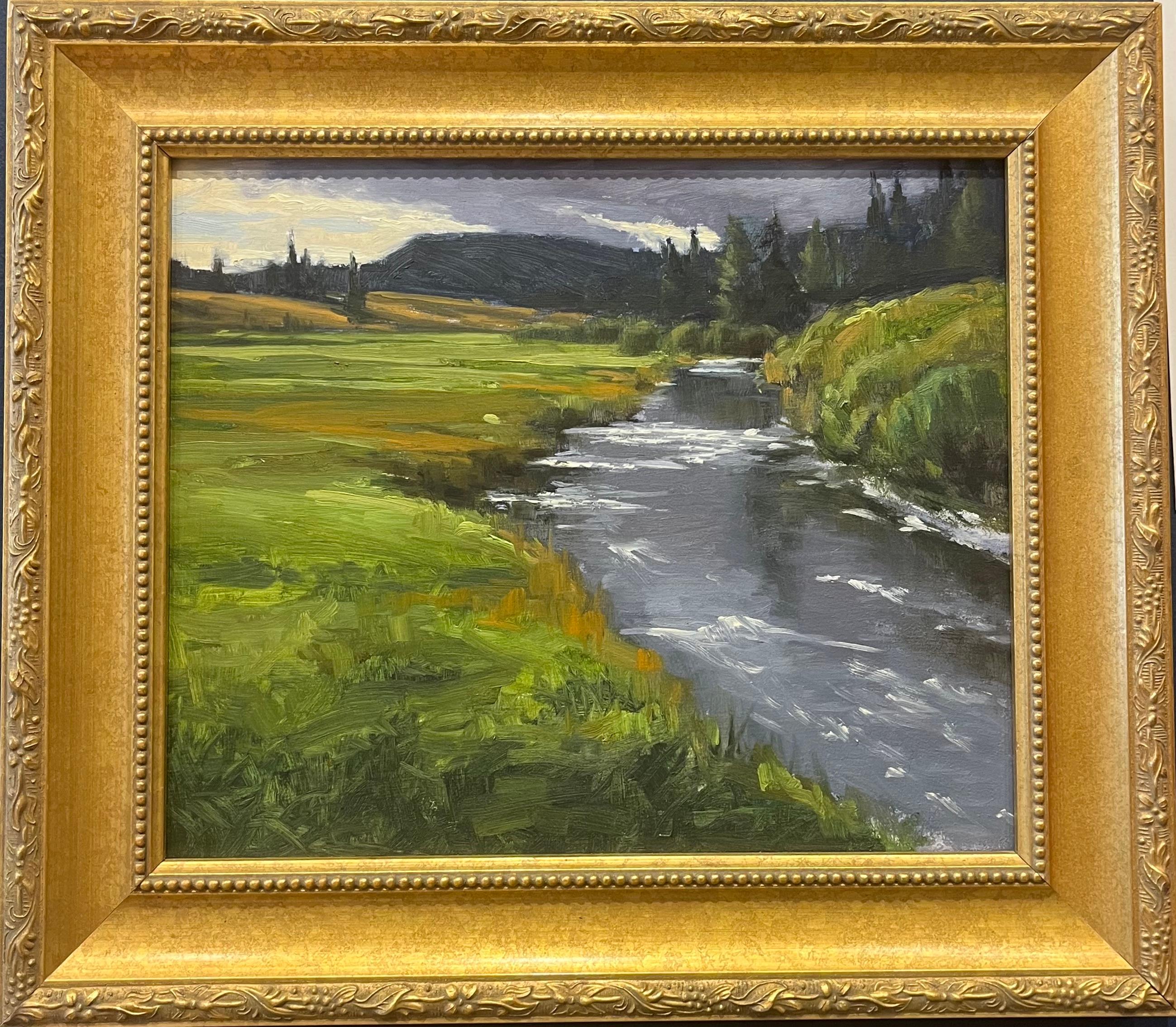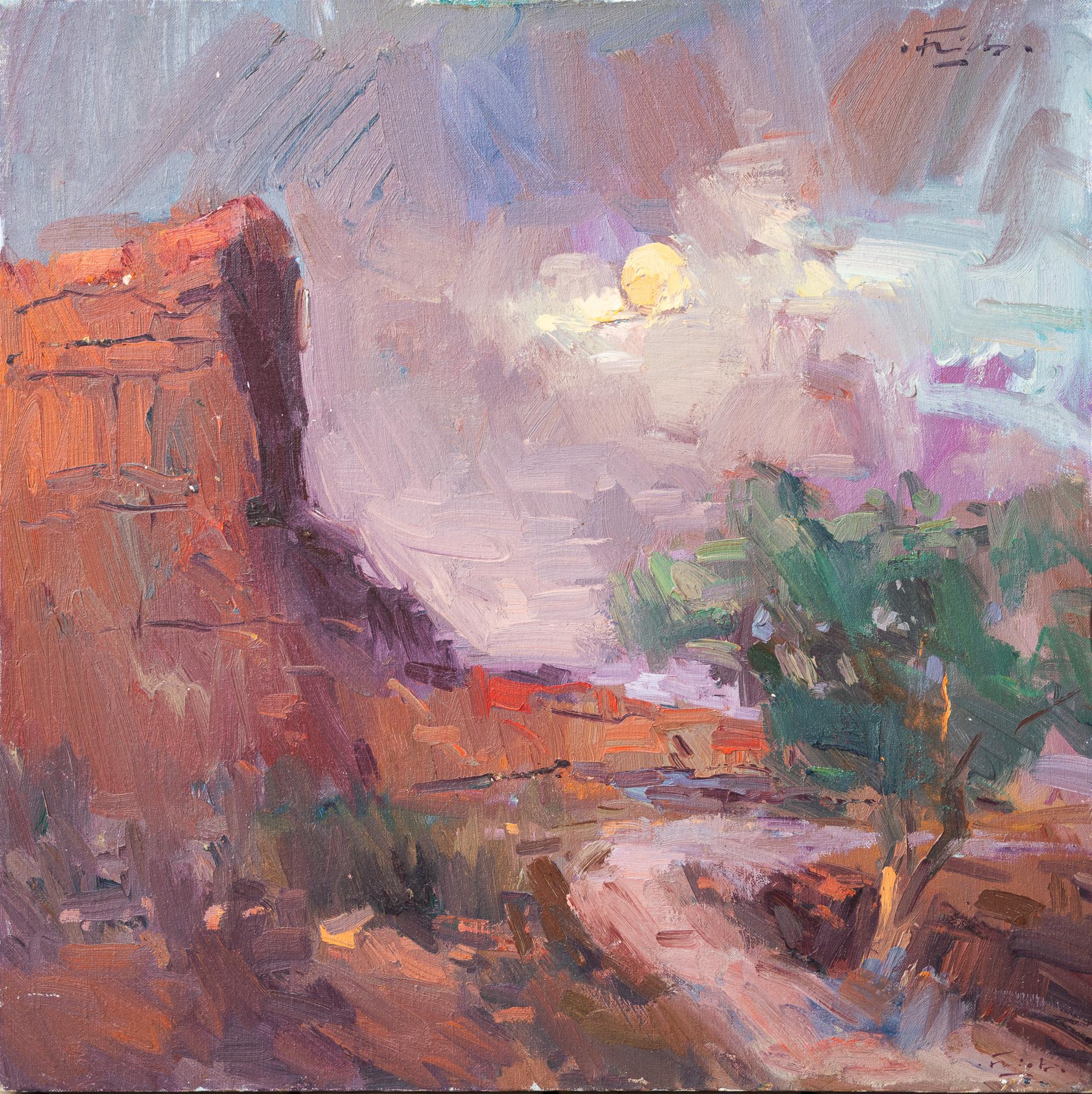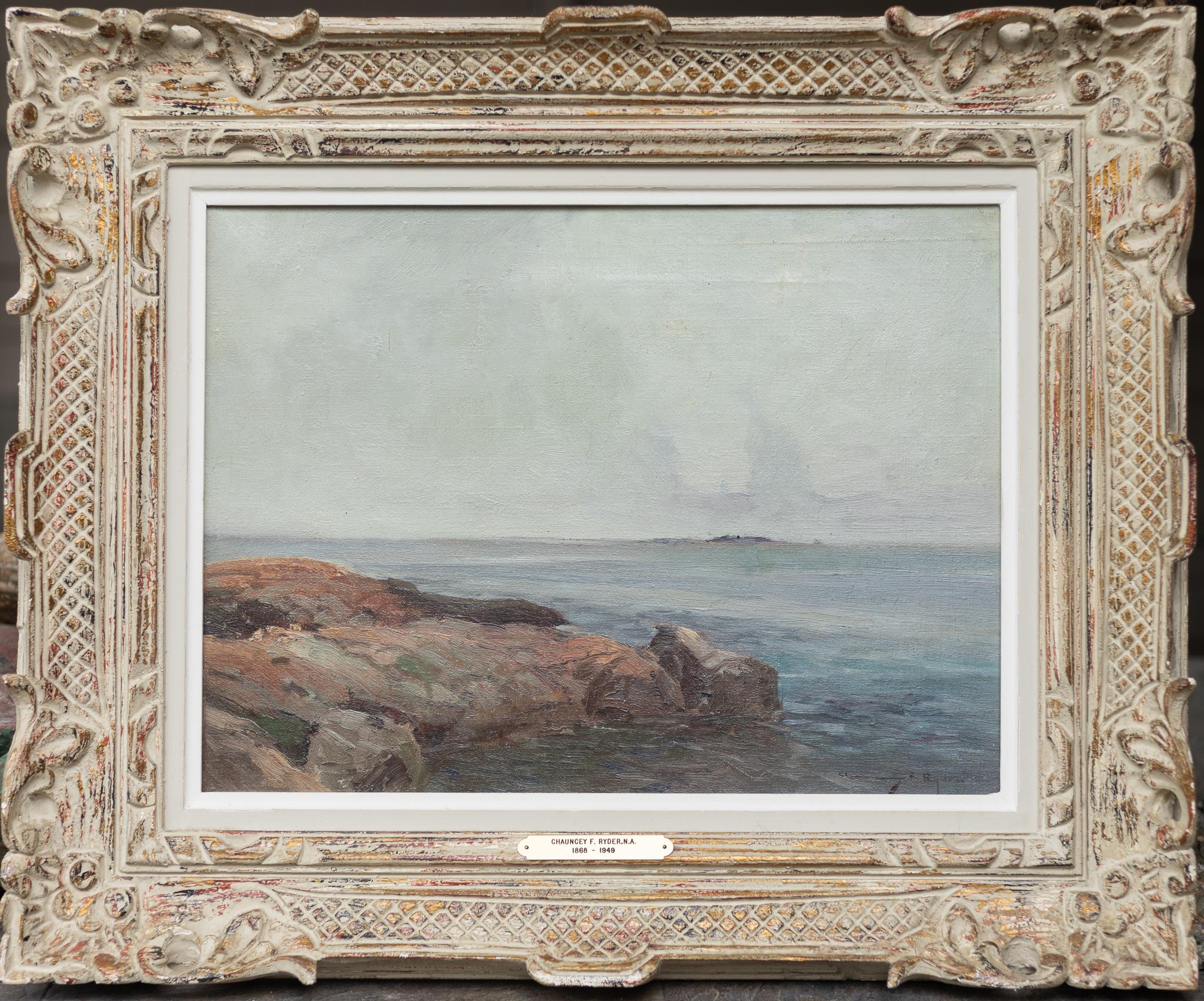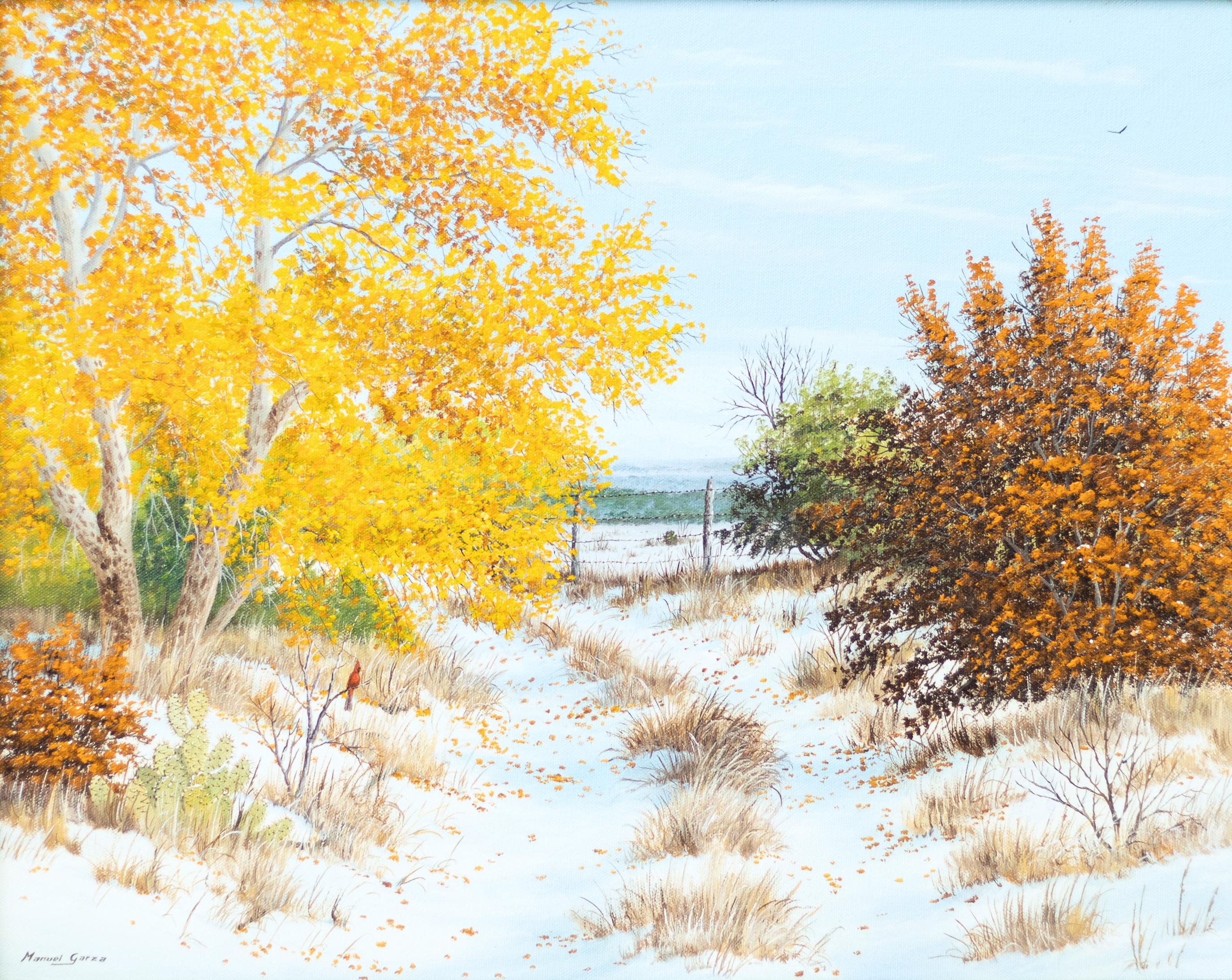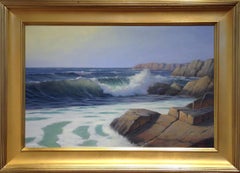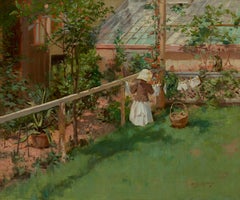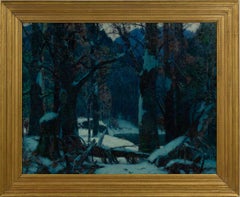
"Forest Colors Arrayed, " Abstract Landscape Painting
View Similar Items
Ken Elliott"Forest Colors Arrayed, " Abstract Landscape Painting2018
2018
About the Item
- Creator:Ken Elliott (American)
- Creation Year:2018
- Dimensions:Height: 36 in (91.44 cm)Width: 36 in (91.44 cm)Depth: 1.5 in (3.81 cm)
- Medium:
- Movement & Style:
- Period:
- Condition:
- Gallery Location:Westport, CT
- Reference Number:Seller: KE0091stDibs: LU5443295293
Ken Elliott
Ken Elliot works with oil paints and pastels to bring abstracted scenes of nature to life. The Colorado artist’s frequently luminous landscape paintings, which feature trees, rivers, lakes, mountains and skies, ripple with energy. Elliot finds endless inspiration in the variation of the world around him, and the prolific colorist’s works are held in thousands of personal and private collections.
Elliot didn't begin painting until late in life. In 1967, he graduated from the University of Houston, where he studied art and advertising. His subsequent jobs as an art restorer, a picture framer and an art dealer in Texas exposed him to many styles and a range of mediums. Finally, in 1987, Elliot moved to San Francisco to embark on a painting career. He started by painting breathtaking sunlit scenes of Texas and California.
After a few years of teaching himself new skills and techniques, Elliot was accepted into a master class at the Santa Fe Art Institute. The class was taught by acclaimed painter Wolf Kahn — who studied with the legendary teacher and Abstract Expressionist painter Hans Hofmann — and Kahn’s insights have since proven indispensable for Elliot.
Elliot currently lives in Colorado, where he continues to create more Impressionistic landscapes. Sometimes he isn’t merely working on one painting — the artist usually has a number of works going at once and has said that the paintings can inspire one another. Elliot regularly exhibits at galleries in Colorado, New Mexico, Connecticut, Texas and New York.
On 1stDibs, find Ken Elliot prints, paintings, watercolors and more.
- 'Maine Coast', Cape Cod Framed Modern Impressionist Marine Oil PaintingBy Ronald TinneyLocated in Westport, CTCape Cod, seascape, summer, sail, boat, waves, water, ocean, white, aqua, blue, coastal, nautical, refresh, marine, marine art, sailboat, serene, tranquil, water scene, scenic, landscape, traditional, contemporary art, calm, dark blue, oceanic, sea, framed, gold framed, impressionist, impressionist art, impressionism, American impressionism. Canvas size is 30”x40”. Professionally Framed In A Classic Wood Antiqued Gold-Hued Frame. Ready To Hang. (27.25” x 37.25” Framed) Please note that the frame is free and has some wear and areas where the gold paint has rubbed off. Ronald J. Tinney was born in 1958 in Pottstown, Pennsylvania. Ron now lives on Cape Cod in Massachusetts and is a full-time artist focusing on Coastal Landscapes and Marine scenes in oils. He paints on location “en plein air” year round, studying nature and creating source material for his larger studio paintings. Ron is a “Signature Member” of the American Society of Marine Artists, a Professional Member of the International Society of Marine Painters, a Juried Member of the Copley Society and a Past President of the Cape Cod Art...Category
2010s American Impressionist Landscape Paintings
MaterialsOil, Canvas
- "Saccades III, " Contemporary Abstract Landscape PaintingBy Ken ElliottLocated in Westport, CTThis contemporary abstract landscape painting by Ken Elliott is made with oil paint on canvas. Multi-colored tree trunks and foliage extend from the bottom of the canvas up to the to...Category
2010s American Impressionist Landscape Paintings
MaterialsCanvas, Oil
- "Illuminated Greens, " Abstract Landscape PaintingBy Ken ElliottLocated in Westport, CTThis abstracted, impressionistic landscape painting by Ken Elliott is made with oil paint on canvas. It captures a hill beneath a saturated pink sky, with varying shades of green and...Category
2010s American Impressionist Abstract Paintings
MaterialsOil, Canvas
- "Edge of the Meadow" Contemporary Abstract Landscape PaintingBy Ken ElliottLocated in Westport, CTThis contemporary abstract landscape painting by Ken Elliott is made with oil paint on canvas. It captures a scene with cool blue and violet trees in front of rolling hills under a p...Category
2010s American Impressionist Landscape Paintings
MaterialsCanvas, Oil
- "Haze in the Forest, " Abstract Landscape PaintingBy Ken ElliottLocated in Westport, CTThis contemporary abstract landscape painting by Ken Elliott is made with oil paint on canvas. It features a cool violet-blue palette, capturing an abstracted scene of a forest in th...Category
2010s American Impressionist Landscape Paintings
MaterialsCanvas, Oil
- "New England Farm, " Landscape Oil PaintingBy John C. TraynorLocated in Westport, CTThis large landscape oil painting by John Traynor captures a scene in New England. Cows are visible in front of a long picket fence, with a red barn and house behind the fence and lush green trees on either side and along the hills in the horizon. Fluffy, almost abstracted clouds sit above the hills, with a patch of blue skies shining through toward the top of the image. The painting is 48" x 72", and 58" x 82" framed. It is professionally framed in a classic, antiqued, gold leaf frame. It is signed by the artist in the bottom right-hand corner of the canvas, and is wired and ready to hang. John C. Traynor's painting style is reminiscent of some 19th century painters and the Dutch Masters. He uses his knowledge of light and color to create a certain mood in each of his works. The creation of atmosphere is an important element in Traynor's paintings. Painting outdoors, on location, is a prime source of inspiration and ideas for his landscapes. John travels extensively, painting the landscapes around him. John was born in 1961 and spent his early years in Chester and Mendham, New Jersey. His art studies began at Delbarton School in Morristown, New Jersey, and from there he furthered his education at Paier College of Art in New Haven, Connecticut. He studied figure painting at the Art Students League of New York, as a merit scholar, with Frank Mason. Traynor continued his studies in Vermont with Mr. Mason on landscape painting, drawing with Carroll N. Jones Jr. of Stowe, Vermont and sculpture with Brother Jerome Cox...Category
1990s American Impressionist Landscape Paintings
MaterialsCanvas, Oil
- At the ClotheslineBy Irving Ramsey WilesLocated in New York, NYSigned lower right: Irving R. WilesCategory
Late 19th Century American Impressionist Landscape Paintings
MaterialsCanvas, Oil
- "Alley Fiends"By John R. GrabachLocated in Lambertville, NJJim’s of Lambertville is proud to offer this artwork by: John R. Grabach (1886 - 1981) John Grabach was a highly regarded New Jersey artist, teacher, and author of the classic text...Category
1930s American Impressionist Landscape Paintings
MaterialsCanvas, Oil
- "Forest Strongholds"By John F. CarlsonLocated in Lambertville, NJSigned lower right. Complemented by a hand carved and gilt frame. Exhibited at the National Academy of Design, 1928Category
20th Century American Impressionist Landscape Paintings
MaterialsCanvas, Oil
- "Solebury Valley"By William Langson LathropLocated in Lambertville, NJSigned lower right. Complemented by a period frame. William L. Lathrop (1859-1938) Deemed “Father of the New Hope Art Colony”, William Langson Lathrop was born in Warren, Illinois. He was largely self-taught, having only studied briefly with William Merritt Chase in 1887, at the Art Students League. Lathrop first moved east in the early 1880s, and took a job at the Photoengraving Company in New York City. While there, he befriended a fellow employee, Henry B. Snell. The two men became lifelong friends and ultimately, both would be considered central figures among the New Hope Art Colony. Lathrop's early years as an artist were ones of continuing struggle. His efforts to break through in the New York art scene seemed futile, so he scraped enough money together to travel to Europe with Henry Snell in1888. There he met and married an English girl, Annie Burt. Upon returning to New York, he tried his hand at etching, making tools from old saw blades...Category
1910s American Impressionist Landscape Paintings
MaterialsCanvas, Oil
- Winter MoonlightBy George William SotterLocated in Lambertville, NJsigned lower rightCategory
1910s American Impressionist Landscape Paintings
MaterialsCanvas, Oil
- "The Canal"By Edward Willis RedfieldLocated in Lambertville, NJJim’s of Lambertville is proud to offer this artwork. Signed lower left. Complemented by a hand carved and gilt frame. Illustrated in "Edward Redfield: Just Values and Fine Seeing" by Constance Kimmerle and the Pennsylvania Academy of the Fine Arts's Exhibition of Paintings by Edward Redfield (April 17 to May 16, 1909) brochure Edward Willis Redfield (1869 - 1965) Edward W. Redfield was born in Bridgeville, Delaware, moving to Philadelphia as a young child. Determined to be an artist from an early age, he studied at the Spring Garden Institute and the Franklin Institute before entering the Pennsylvania Academy from 1887 to 1889, where he studied under Thomas Anshutz, James Kelly, and Thomas Hovenden. Along with his friend and fellow artist, Robert Henri, he traveled abroad in 1889 and studied at the Academie Julian in Paris under William Bouguereau and Tony Robert-Fleury. While in France, Redfield met Elise Deligant, the daughter of an innkeeper, and married in London in 1893. Upon his return to the United States, Redfield and his wife settled in Glenside, Pennsylvania. He remained there until 1898, at which time he moved his family to Center Bridge, a town several miles north of New Hope along the Delaware River. Redfield painted prolifically in the 1890s but it was not until the beginning of the twentieth century that he would develop the bold impressionist style that defined his career. As Redfield’s international reputation spread, many young artists gravitated to New Hope as he was a great inspiration and an iconic role model. Edward Redfield remained in Center Bridge throughout his long life, fathering his six children there. Around 1905 and 1906, Redfield’s style was coming into its own, employing thick vigorous brush strokes tightly woven and layered with a multitude of colors. These large plein-air canvases define the essence of Pennsylvania Impressionism. By 1907, Redfield had perfected his craft and, from this point forward, was creating some of his finest work. Redfield would once again return to France where he painted a small but important body of work between 1907 and 1908. While there, he received an Honorable Mention from the Paris Salon for one of these canvases. In 1910 he was awarded a Gold Medal at the prestigious Buenos Aires Exposition and at the Panama-Pacific Exposition of 1915 in San Francisco, an entire gallery was dedicated for twenty-one of his paintings. Since Redfield painted for Exhibition with the intent to win medals, his best effort often went into his larger paintings. Although he also painted many fine smaller pictures, virtually all of his works were of major award-winning canvas sizes of 38x50 or 50x56 inches. If one were to assign a period of Redfield’s work that was representative of his “best period”, it would have to be from 1907 to 1925. Although he was capable of creating masterpieces though the late 1940s, his style fully matured by 1907 and most work from then through the early twenties was of consistently high quality. In the later 1920s and through the 1930s and 1940s, he was like most other great artists, creating some paintings that were superb examples and others that were of more ordinary quality. Redfield earned an international reputation at a young age, known for accurately recording nature with his canvases and painting virtually all of his work outdoors; Redfield was one of a rare breed. He was regarded as the pioneer of impressionist winter landscape painting in America, having few if any equals. Redfield spent summers in Maine, first at Boothbay Harbor and beginning in the 1920s, on Monhegan Island. There he painted colorful marine and coastal scenes as well as the island’s landscape and fishing shacks. He remained active painting and making Windsor style furniture...Category
Early 1900s American Impressionist Landscape Paintings
MaterialsCanvas, Oil
